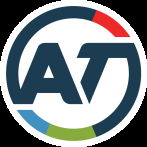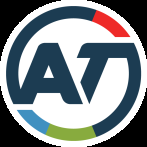

20 Viaduct Harbour Avenue Auckland 1010
Private Bag 92250, Auckland 1142, New Zealand
Ph 09 355 3553
Fax 09 355 3550
16 December 2021
Anatole Sergejew
[FYI request #16797 email]
Kia ora Anatole,
The information you requested - CAS-467162-V2Y4X2
Thank you for your request for information dated 19 September 2021 regarding how the
Regional Land Transport Plan (RLTP) and Regional Public Transport Plan (RPTP) have
identified and considered the needs of transport disadvantaged persons.
Section 35 of the Land Transport Management Act 2003 (LTMA) requires Auckland
Transport “to consider the needs of persons who are transport-disadvantaged”. The Act also
defines this in section 5 as “people who the regional council has reasonable grounds to
believe are the least able to travel to basic community activities and services (for example,
work, education, health care, welfare, and shopping)”.
The RLTP gave appropriate consideration to the needs of persons who are ‘transport
disadvantaged’ by including projects and programmes that direct significant investment
towards improving travel options and transport accessibility. Examples include:
• The expansion of the rapid transit network through projects such as City Rail Link
and the Rail Development Programme, the Eastern Busway, Northwest busway and
elements of Airport to Botany. This extension of high-quality public transport
infrastructure provides better travel alternatives to areas of the city which have
typically suffered from poor accessibility and car dependency, such as the South and
the West, corresponding with areas in Auckland with lower incomes and higher
social deprivation.
• A range of other public transport and active modes transport projects in the south,
particularly cycling investment in Mangere East and Manukau as part of the Ongoing
Cycling Programme.
• A funding al ocation of $40 million to the Accessibility Improvement Programme,
which is designed to retrofit public transport infrastructure to improve access for
people with disabilities or other accessibility needs. The Accessibility Improvement
Project is a key project that secures funding to deliver outcomes identified in the
Accessibility Action Plan, with a goal of delivering a transport system which meets
the needs of al Aucklanders. The Plan was worked through with key stakeholders
and developed two advocacy groups: The Public Transport Accessibility Group and
aucklandtransport.govt.nz



the Capital Projects Accessibility Group, which enable interaction between AT and
various accessibility groups and facilitates early involvement in proposals and
projects ahead of finalisation.
• Community Connect (pilot) – this wil enable a 50 per cent discount on public
transport for up to 300,000 Auckland residents with Community Services Cards. This
programme is designed to encourage more people to use public transport,
particularly those where the cost of public transport is a barrier.
• Other programmes such as the safety, security and amenity improvements on the
public transport network wil support users with access chal enges. Many of the
minor programmes funded by the RLTP look to upgrade infrastructure across the
network, remove barriers to travel, and ensure better transport outcomes for all
Auckland residents.
• Although not strictly the result of the RLTP, design of al new projects wil align to
AT’s Transport Design Manual, which incorporates the requirements of Aucklanders
with accessibility needs as part of its design standards.
The Regional Public Transport Plan (RPTP) 2018 Appendix 6 (attached) includes an
assessment which identifies ten different groups as more likely to be transport
disadvantaged and an analysis demonstrating both current and possible future public
transport responses for these groups. The RPTP (2018 – 2018) continues to be operative, as
its preparation commences after the adoption of the RLTP (in accordance with s126(1)(b) of
the LTMA. However, we expect to fol ow a similar approach to identifying the factors and
groups that need to be considered in accordance with the LTMA. The RPTP is due to be
updated in 2022.
Should you believe that we have not responded appropriately to your request, you are able
to make a complaint to the Office of the Ombudsman in accordance with section 27(3) of
the LGOIMA Act, and seek an investigation and review in regard to this matter.
Yours sincerely
Hamish Bunn
Group Manager – Investment, Planning & Policy




